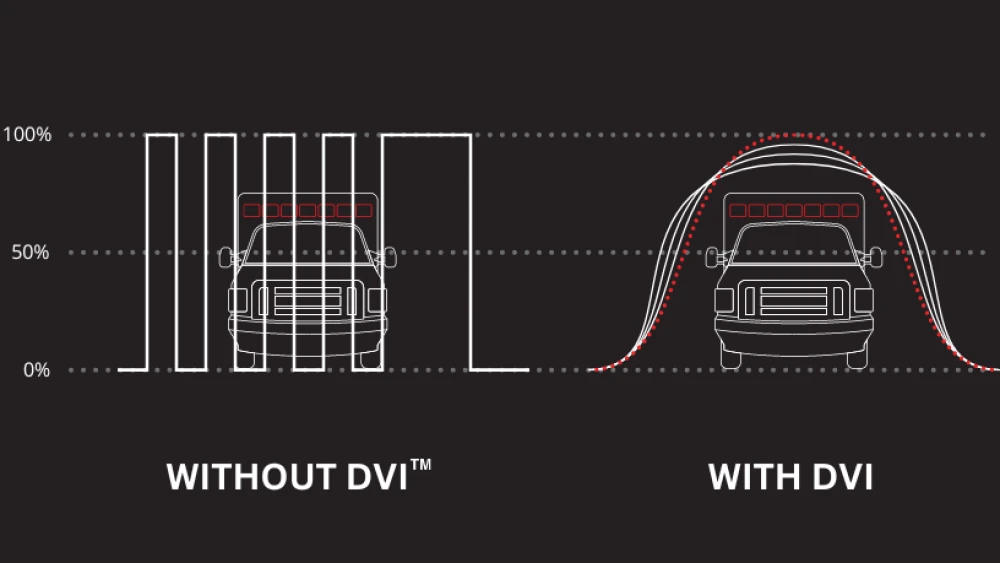Right now, there are no immediate plans to release brand-new DVI patterns. That said, we continuously monitor field requests and customer feedback. If there’s enough demand and the patterns meet required standards, new patterns are definitely possible. We’re always listening.
Yes, as long as the flash rate is the same. When syncing patterns, especially with V2V, timing is key. If patterns don’t align precisely, they may appear to be out of sync. For the most consistent and visually clean results, we recommend using the exact same pattern across all lights.
Yes. Several of our current lightheads, like the M Series™, already include DVI patterns. We also plan to expand DVI availability in future products. You’ll find DVI options in many of our WeCanX® products as well. Through Command® software, you can easily select these patterns. If the demand is there and we can meet certifications, we’ll continue to expand compatibility.
DVI doesn’t use a harsh burst of light. Instead, it gradually increases and decreases brightness to reduce visual fatigue and improve perception. The light is just as bright overall, but it appears less abrupt.
Yes, several DVI patterns are SAE certified. The easiest way to check is in the Command software. You can filter by SAE-certified patterns and see a complete list.
Possibly. If customers request it and we can maintain compliance with certifications and performance expectations, it’s something we could consider.
Yes. Any department using the V2V Sync Module with a compatible Core system can sync with others using the GPS time clock. As long as they’re using the same or similar flash patterns, synchronization will occur, even across jurisdictions.
No. All vehicles use the GPS time clock to synchronize, so there’s no lead vehicle required. V2V relies on GPS timing, just like how your phone or vehicle clock updates. Because it uses universal GPS time, all lights start at the same moment—even across state lines.
Yes. You can select either daytime or nighttime patterns in Command. Daytime patterns are brighter to ensure visibility in full sunlight. Nighttime patterns are dimmed slightly to reduce glare and improve visibility in low-light conditions.
We don’t currently plan to integrate V2V directly into the Core module itself. However, we do offer premium lightbars, like the Liberty™ and Legacy®, that include V2V functionality.
Have more questions about DVI or V2V?
We’re here for it. At Whelen, every product we build and every innovation we develop is driven by real feedback from first responders in the field. Whether you’re exploring the benefits of DVI for safer nighttime visibility or looking to streamline multi-vehicle coordination with V2V, our team is dedicated to delivering solutions that make your job easier, safer, and more effective.
As technology evolves, so do we. Your questions, ideas, and input help shape the future of emergency vehicle lighting. Keep them coming.
Together, we’ll continue pushing the boundaries of what’s possible.
Want to see this innovative technology in action? Click HERE!
And for all the latest updates and exclusive features on our industry-leading products and technology, subscribe to our newsletter!
Many thanks to Western Regional Sales Manager Matthew Groth and Tech Support Group Supervisor David Ibbotson for contributing to this article.

